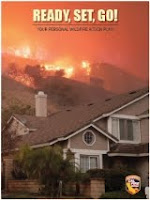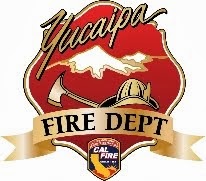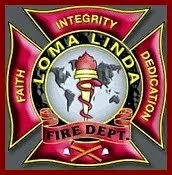Residents living in Inyo, Mono, and San Bernardino counties interested in a fire prevention program email jack.markle@fire.ca.gov
http://.gif)
I am writing to let you know that we are listing your blog in our blog directory on FireRescue1.com - we are currently updating our listings and providing all those who are featured with a 'Featured Site' badge. Having reviewed our list of blogs in order to optimize the value of our directory, I am delighted to be able to provide the CALFIREBDU blog with this - from our perspective; it symbolizes the value of your content and our belief that it will be uesful and interesting to our 150,000+ members
Congratulations, and keep up the good work!
Will Russel
Spring has sprung, the grass is turning, time to start clearing, to help prevent your property from burning. Don’t let the cool weather and light showers fool you, the abundant grasses in the fields and on the hillsides have begun the end of their life cycle. What were emerald green hillsides and fields are now beginning to turn brown as the grass dies.
Now is the time to begin clearing your property of the winter overgrowth. California Public Resources Code 4291 mandates that property owners in the wildland urban interface areas clear 100 feet around their structures or to the property line. The law calls for clearance to the ground from the structure out to thirty feet. From thirty feet to 100 feet involves modification of the vegetation in order to reduce the intensity of a potential wildland fire that might threaten your home.
Is Your Home Ready? Wildfire is coming, that is a fact. We see wildfire burn through areas of California every year. Along with the mandated PRC 4291 clearance, you should also be hardening your home against wildfire. Flying embers can destroy homes up to a mile ahead of a wildfire. What type of roof do you have? Wood or shingle roofs are particularly vulnerable to wildfire. The vents on homes create openings for embers to penetrate into the home. You can cover the vent openings with 1/8-inch to ¼-inch metal mesh. Eaves and soffits should be protected with ignition-resistant or non-combustible materials. Windows, exterior walls, rain gutters, patio covers and fences can all be hardened to help resist fire.
To get more information on how to defend your home from wildfire, go to http://www.fire.ca.gov or http://www.readyforwildfire.org/. It is the responsibility of the home owner to provide the basics of fire prevention for their property. However, by providing defensible space, this allows firefighters an area in which they can fight the fire and work to protect the home. The majority of homes with defensible space survive wildland fires. So be a part of the Fire Prevention Team, “protect your property and protect your family.”
.gif)



























